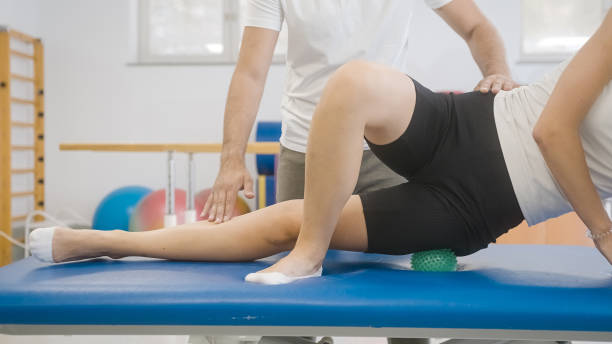Introduction
When life throws unexpected challenges our way, it often manifests in the form of personal injury. Whether it’s a slip and fall, a car accident, or a sports-related mishap, the aftermath can leave individuals grappling with pain and limitations. Amidst the chaos, seeking effective solutions for rehabilitation becomes paramount. This is where Physical Therapy services step into the spotlight, offering a comprehensive approach to guide individuals on their journey back to pain-free living.
The Role of Physical Therapy in Personal Injury
Personal injury can manifest in various ways, impacting not only the physical body but also the overall well-being of an individual. Physical Therapy, a specialized branch of rehabilitative healthcare, plays a pivotal role in addressing and overcoming these challenges. The primary objective is to restore function, alleviate pain, and enhance the quality of life for those who have experienced a personal injury.
In the realm of personal injury, Physical Therapy adopts a tailored approach. Whether the injury stems from a fall, a workplace incident, or a sports accident, therapists analyze the unique circumstances surrounding each case. This personalized attention allows for the development of targeted rehabilitation plans, addressing specific issues and facilitating a faster recovery.
Tailored Rehabilitation for Personal Injury
One of the key strengths of Physical Therapy lies in its ability to offer tailored rehabilitation programs. Therapists employ a variety of techniques, exercises, and modalities to address the diverse range of injuries that fall under the umbrella of personal injury. From soft tissue injuries to fractures and joint dislocations, the spectrum is vast, requiring a nuanced and individualized approach.
In the context of personal injury, Physical Therapy may include exercises to improve strength and flexibility, manual therapy to address specific pain points, and targeted interventions to enhance mobility. The goal is not merely symptom management but a holistic approach that addresses the root cause of the injury, promoting long-term healing and resilience.
Empowering Individuals on the Path to Recovery
Navigating personal injury can be a daunting task, both physically and emotionally. Physical Therapy, however, serves as a guiding light, empowering individuals to take control of their recovery journey. Beyond the physical aspects, therapists often play a crucial role in providing emotional support, and understanding the mental toll that personal injuries can impose.
As individuals engage in Physical Therapy, they become active participants in their recovery. The process is collaborative, with therapists working hand-in-hand with patients to set goals, track progress, and make adjustments as needed. This sense of empowerment fosters a positive mindset, a critical component in the intricate tapestry of personal injury recovery.
Conclusion
In the intricate dance of recovery after a personal injury, Physical Therapy emerges as a steadfast partner. Through personalized approaches, tailored rehabilitation, and an empowering ethos, it guides individuals along the path to restored well-being. In the realm of personal injury, where the road may seem uncertain, Physical Therapy becomes a beacon of hope, illuminating the way to a future free from pain and limitations.




